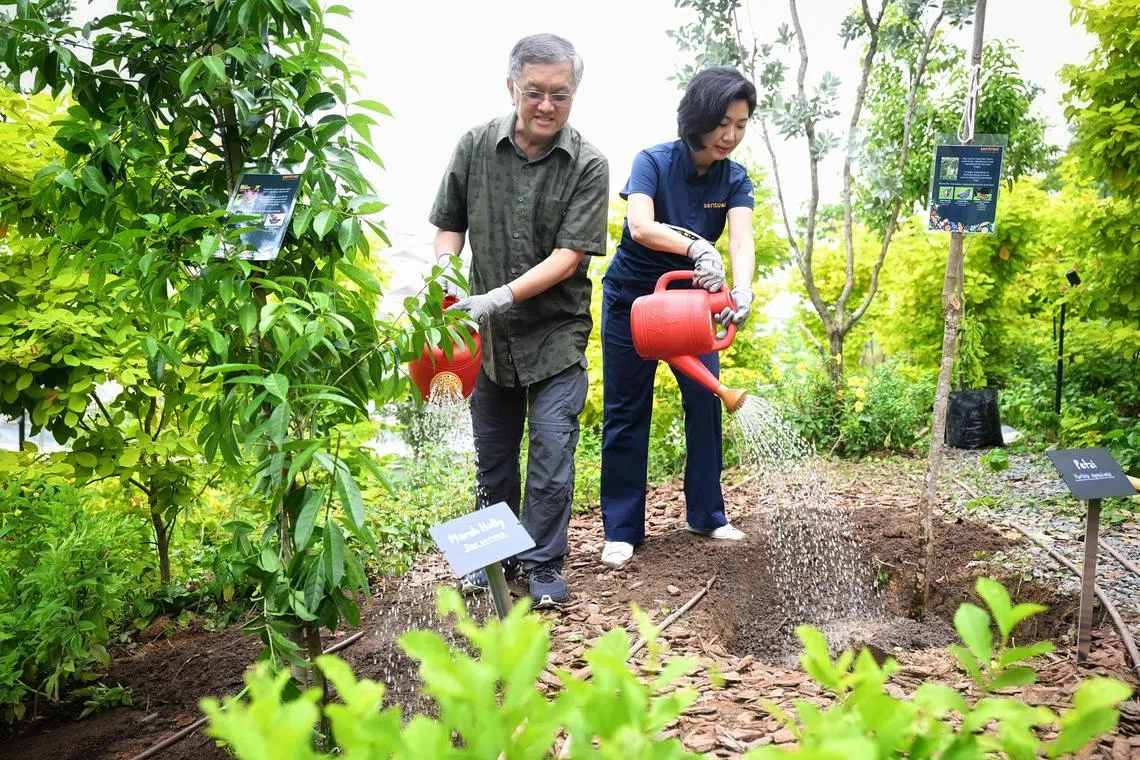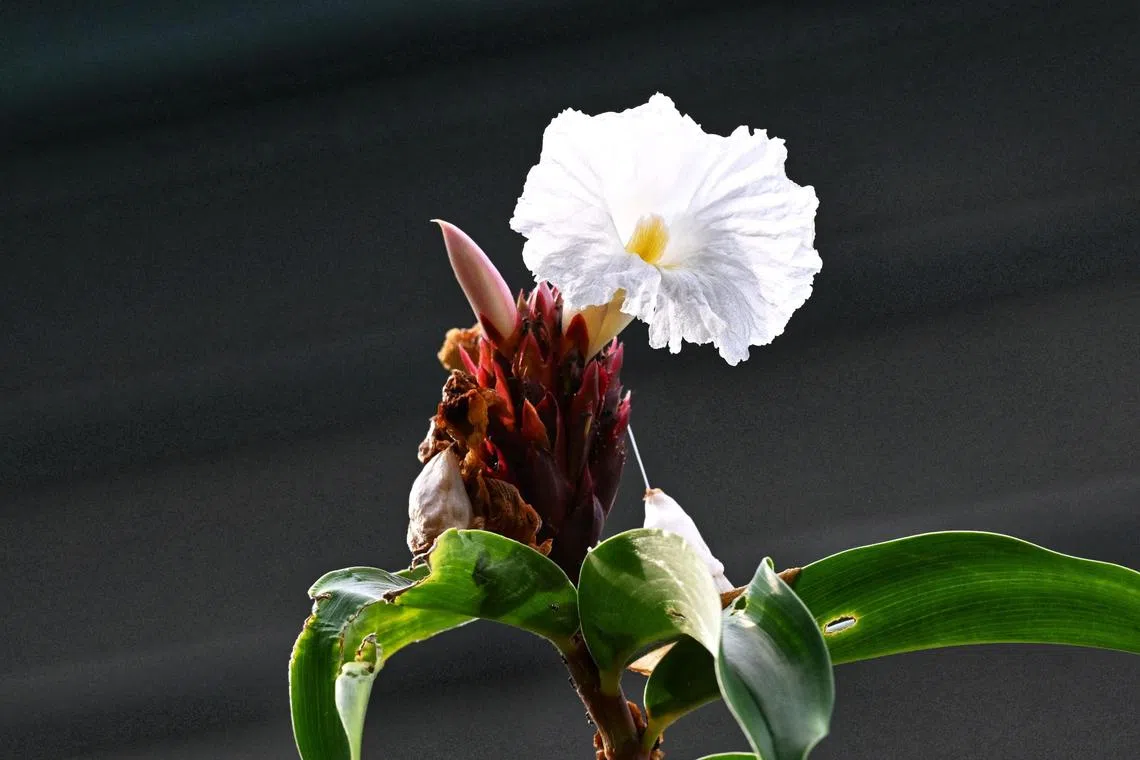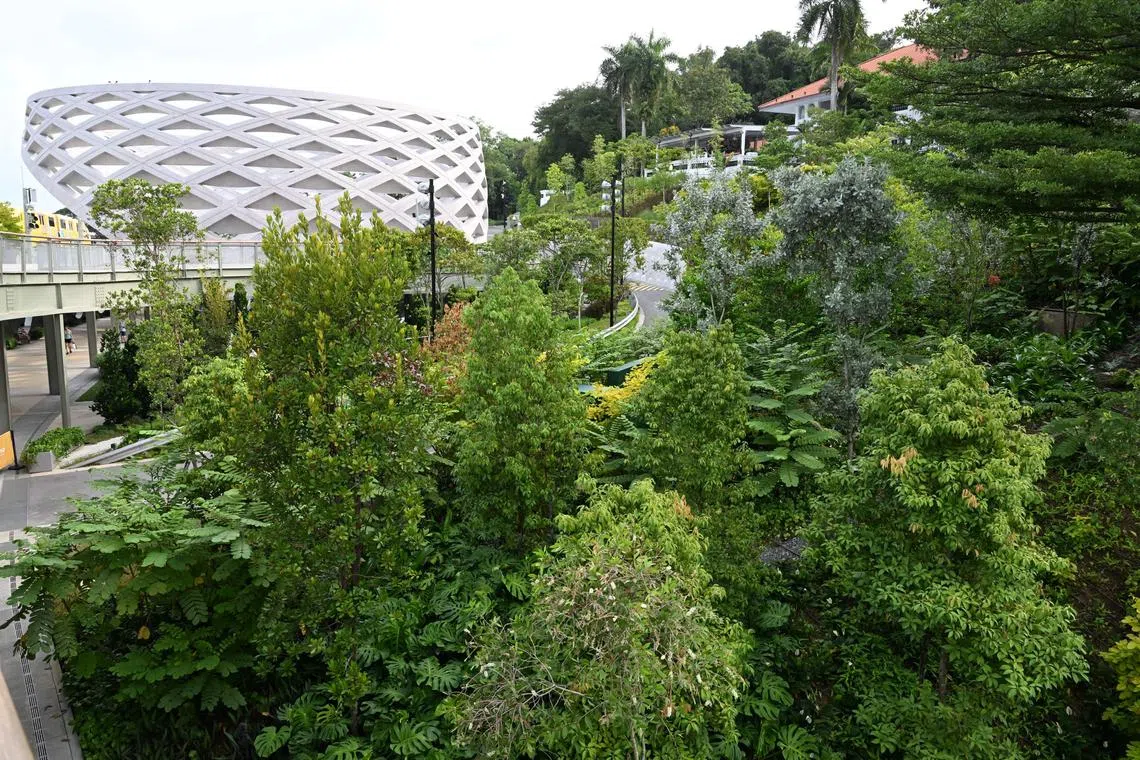‘Hawker centre’ for butterflies: Sentosa’s new green corridor to grow native biodiversity
Sign up now: Get ST's newsletters delivered to your inbox

SDC CEO Thien Kwee Eng (right) and Mr Khew Sin Khoon, an avid lepidopterist, led the ceremonial planting ceremony on June 19.
ST PHOTO: CHONG JUN LIANG
Follow topic:
SINGAPORE – A green corridor on Sentosa lush with more than 3,000 native plant species aims to attract and help grow the local population of butterflies such as the blue pansy and tailed jay, and aid in their recovery.
Other than serving as food for the caterpillars, the plants provide the butterflies with a place to lay their eggs, and serve as food for birds and bees as well.
The green corridor – which spans 500 sq m on mostly hilly terrain – with plants such as marsh holly, Geiger tree and Chinese violet, links the Imbiah Nature area to Sentosa Sensoryscape.
The open-air corridor allows butterflies to freely travel across more than 40ha of forests and nature reserves on Sentosa.
Planting will continue over the year to incorporate areas under the express track and beach depot area.
Ms Thien Kwee Eng, chief executive officer of Sentosa Development Corporation (SDC), and Mr Khew Sin Khoon, 65, an avid lepidopterist also affectionately known as “Butterfly man” in the local butterfly community, led the ceremonial planting ceremony on June 19.
Located a minute’s walk from Imbiah Station, the corridor is open to the public for free.

The Cheilocostus speciosus is one of the plants being planted to form the new butterfly corridor at Imbiah Terrace.
ST PHOTO: CHONG JUN LIANG
Asked how the population of butterflies is expected to grow, Mr Khew likened the corridor to a “hawker centre” for butterflies.
“Butterflies are like people, it’s like Sentosa just opened a hawker centre, there’s food (flowers). And what happens when a new hawker centre opens in Singapore? More people come because of more food options and an ideal environment,” he said.
However, he added: “Mother Nature is unpredictable, we cannot guarantee a specific number of butterflies, but by creating a corridor, it will attract them for the growth of their population and the continuation of their species.”
Ms Thien highlighted that the corridor, while targeted at butterflies, also benefits the native wildlife on Sentosa, such as moths, birds and mammals.
Speaking to The Straits Times, Mr Khew said the local butterfly population has declined due to the destruction of habitats from the 1960s to 1990s. Unable to travel across the fragmented areas, the butterflies start to in-breed, and eventually die off.
Mr Khew added that butterfly caterpillars are very finicky about the plants they consume; without specific plants, they will run out of food sources and die.
Ms Grace Lee, director of environmental management at SDC, who worked on the butterfly-corridor project, said the corridor is focused on biodiversity rather than tourism.
She hopes that with a bigger playground to thrive in, the butterfly population will spread to other parts of Sentosa, and, hopefully, the mainland.

Plants attracting butterflies are planted among the existing plants to create a new “butterfly corridor” at Imbiah Terrace.
ST PHOTO: CHONG JUN LIANG
Ms Lee said native plants were chosen as they are more resilient in the harsher island environment, which includes strong winds.
Contrary to the popular belief that plants with holes in their leaves are a problem due to pests, she said: “The holes on native plants are not a bad thing! They actually indicate the success of the project and (augur well for) the population of butterflies and their offspring.”

